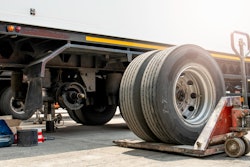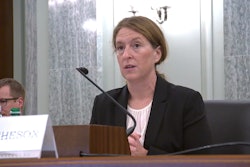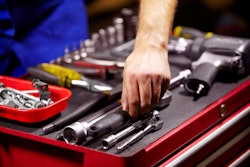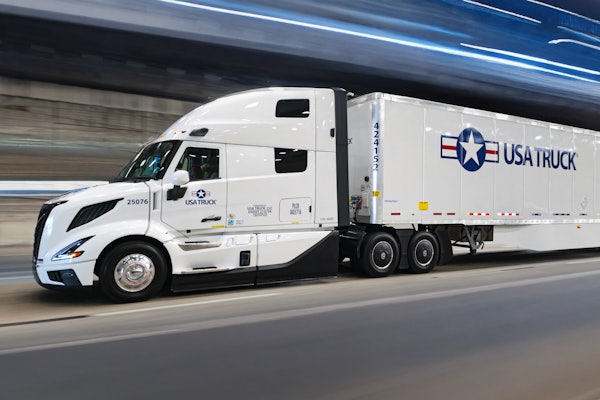Have you ever been asked to sell a placebo to the trucking industry?
Often called "mouse milk” or “panther piss," it could be a liquid poured into the fuel tank, a metal catalyst that went in the fuel tank, or magnets clamped to a fuel line. Believe it or not, many of these products showed results.
Every product came with a list of driving tips that, if followed – and with the use of the placebo – would result in fuel savings. Great salesmen would refuse to sell the placebo unless the customer signed in blood they would follow the driving tips. These tips included slow down, check tire inflation, and (my favorite) directives to pretend there is an egg between your foot and the accelerator to control acceleration.
I have sold real fuel savings devices in my lifetime. It’s hard to believe today but components such as turbochargers and fan clutches had to be sold before government mandates made them mandatory. The EPA made turbochargers standard equipment and OSHA noise limits did the same for fan clutches.
A real fuel savings device has a basis in science and can be proven with a scientific test. A prime example of what I am talking about came into my life a little over a decade ago. The basic science behind the product is that it takes energy to create a vibration.
My son, who is into singing and playing music, summed it up for me: “A guitar won’t play itself.” A guitar picker must energize the strings to create the vibration we hear as music.
A small digression to a truckstop confession
Anyone who has driven a truck with steer tires out of balance has felt vibration. Some truck drivers even point out their tires sing and talk to them. The truckers would tell me, “If you put a certain number of a certain brand of golf balls in your steer tires, you make them sing a whole different tune by balancing the tires with the golf balls."
I wasn’t the only one listening. Roger LeBlanc was also listening, but instead of laughing at what many people thought were foolhardy truckers, he thought they might be onto something and he experimented. Golf balls worked for a while but they melted. He finally settled on tiny glass beads (lots of them) coated in silicone that are specially packaged for ease of use by the tire industry. The man invented, patented and marketed Counteract Balancing Beads (CBB).
Roger wanted to expand his market. There are 18 tires on a truck yet CBB was usually installed in only two. Some really smart people calculated that if all 18 wheel ends were balanced, the vehicle should save at least 2% in fuel. Roger discovered Technology & Maintenance Council (TMC) had a way to verify fuel efficiency claims and started making inquiries. There’s a word for what happened next: serendipity. That is when CBB became part of my life.
Serendipity was hard at work when Roger found me. He joined TMC, attended a meeting, and saw me make a presentation at the meeting. If I hadn’t been a volunteer presenter, I never would have met Roger. (There’s a lesson here.)
In another twist of fate, Auburn University – also a first-time attendee at that same TMC meeting – was there to explore the possibility of offering unbiased fuel economy testing to the trucking industry. I introduced Roger to Auburn’s Transportation Institute and the workings of the SAE/TMC Type II fuel consumption test. A test was scheduled to prove that Mother Nature and science work. It does take energy to create a vibration.
Scientists and engineers theorized there should be a 2% fuel savings. The Auburn test resulted in an actual 2.3% fuel savings. The test vehicle driver even commented the vehicle was driving much smoother.
There are many smart people in the trucking industry and most understand the basic science of energy and vibration. They understand vibration is hard on drivers, vehicles and cargo. In fact, Whole-Body Vibration (WBV) is a field of study unto itself.
Many fleets said they would roll the dice with me and try the magic beads. Many sales stuck because fleets saw an increase in tire life, something they measure because tire life is a big selling point when buying tires.
A small digression to a truck show confession
Roger and I met a truck driver at a truck show who had asked his fleet’s tire manager to start using CBB in his assigned truck’s steer tires. “We can’t,” he said. “Our tire supplier told us to put nothing but clean, dry air in our tires and they are the boss of us.” Being mechanically inclined like many drivers are, he confessed that he put the CBB in his steer tires himself.
In business there is competition. There are engineers who love advancements in the industry, as long as they and their company get the credit for it. When an “outsider” like Roger LeBlanc extends tire life and saves fuel, there can be pushback. A major tire manufacturer started a campaign telling many of their customers they could not duplicate the CBB Auburn test. Roger and I got our hands on the test and to our astonishment the tire manufacturer didn’t even test the Counteract product. They tested using lead weights that only balanced the tires, not the wheel end.
The caveat that a fleet should do its own testing on its own equipment and duty cycle has bothered me for years, and it often stymies action. Here’s an actual confession: “Bob, we can’t make any changes without testing a new product. We don’t have the budget or manpower to do testing. Sorry.”
In another example, I tried to sell a fleet and the sale didn’t stick for two reasons: they never wore out a tire (they damaged them because they delivered off road) and the customer paid the fuel bill. “Saving fuel doesn’t put money in our pocket,” was their excuse.
Being semi-retired I try to keep up with developments in the modern world.
I am trying to keep up with the ABC and D’s of intelligence: A = Artificial intelligence; B = Business intelligence; C = Competitive intelligence; and D = Decision intelligence.
I have tried to apply all these intelligences to my pro bono consulting for Auburn University's Transportation Institute. Working with Auburn, we have come up with what might be the future of fleet fuel economy testing. The trucking industry has already used the numbers I, II, III, and IV for fuel consumption testing. The Auburn experiment might be called V, but there is a lot of competition for this number five from other organizations working on other techniques for fuel consumption testing. The next Type V might be about electric vehicles for all I know.
At Auburn we have deployed the Tangerine.ai data collection system to two brand new Western Star trucks. The system records fuel consumption from the time the vehicle key is turned on until it is turned off. Idle time is also recorded and can be deleted from the fuel consumption data comparisons.
The Type V test, as we have been experimenting with the data, consists of the following steps:
- Establish a baseline of fuel consumption for 30 days on the two or more vehicles, crunch that data for consistency and compare the vehicles to one another.
- Make a change to one of the vehicles. In this case CBB was added to all tires on the designated test vehicle. Nothing is done to the control vehicle. Compare the vehicles to each other and to their recent past.
- So far, reports indicate a reduction in fuel consumption of 2% in the test vehicle, but analysis continues.
The reasons CBB was selected for this test is because Auburn ran a SAE/TMC Type II test and got 2.3% increase in fuel economy in the past, and the science related to CBB reducing fuel consumption is solid. It takes energy to create a vibration. Eliminate the vibration, eliminate energy consumption and reduce fuel consumption.
Having big data on fuel consumption on two or more vehicles’ data analysis and related data science should continue to detect a 2% reduction in fuel consumption.
In preparing this column I reached out to TMC, itself an authority on fuel economy testing. Here’s a brief overview of Type I through IV fuel consumption testing Recommended Practices (RP) from Robert Braswell, TMC's executive director.
In general, the following basic rules must be applied to these procedures to ensure valid test results:
a. A single test is inconclusive. A single test result may be an indicator but test results must be repeatable to have validity.
b. The more variables controlled, the more conclusive the results.
c. All test procedures are accurate within prescribed limits. An additional number of tests should be conducted to prove validity if the component, system or the vehicle being tested by a given procedure shows a degree of improvement which is equal to or less than the accuracy limit of the procedure.
There is no Type I in use today. Type I was a joint SAE/TMC standard back in 1978. TMC dropped it because it didn’t work. SAE kept it on the books, but no one has used it for years.
RP 1102A, TMC FUEL CONSUMPTION TEST PROCEDURE—TYPE II
This RP provides a standardized test procedure for comparing the fuel consumption of two conditions of a single test vehicle or of one test vehicle to another when it is not possible to run the two or more test vehicles simultaneously. An unchanging control vehicle is run in tandem with the test vehicle(s) to provide reference fuel consumption data. It is possible to control more than one test (i.e., having two or more test vehicles) with a single control vehicle; however, if this is done additional care must be taken in conducting tests largely because of separation of the vehicles on the roadway. Running two test vehicles with the control vehicle in between the two test vehicles is the simplest form of the multiple tests, single control vehicle approach.
RP 1103A, TMC FUEL CONSUMPTION TEST PROCEDURE—TYPE III
This RP provides a standard test procedure for comparing the fuel economy of components or systems of the type which cannot be switched from one vehicle to another in a short period of time. This test procedure is also ideally suited for comparing the fuel consumption of one vehicle to another and one component of a combination vehicle to the other vehicle without the component in another.
The test utilizes two in-service vehicles operated over interstate type highways or a test track facility. The relative fuel economy of the component, system or vehicle under test is expressed as a percentage improvement or as a percentage of fuel saved. This factor is calculated using relative fuel consumption between the vehicles while operating with and without the test component, system, or vehicle under evaluation. This procedure is not intended to replace TMC RP 1102 (Type II test), but will enhance a fleet’s or manufacturer’s ability to do a wide variety of fuel consumption tests on highways.
RP 1109B, TYPE IV FUEL ECONOMY TEST PROCEDURE
This RP provides a test procedure for comparing the fuel consumption of two vehicles of similar capabilities, or one unit of a combination vehicle to the same unit of another combination vehicle. This procedure also provides for evaluation of the effects of certain components or systems on fuel economy. This version permits valid comparison of vehicles using both particulate trap after treatment and diesel exhaust fluid (DEF).
The test uses two vehicles operating in revenue service over interstate highways. The relative fuel economy of the component, system, or vehicle tested is expressed as a percentage improvement or as a percentage of fuel saved. This factor is calculated using relative fuel consumption.











